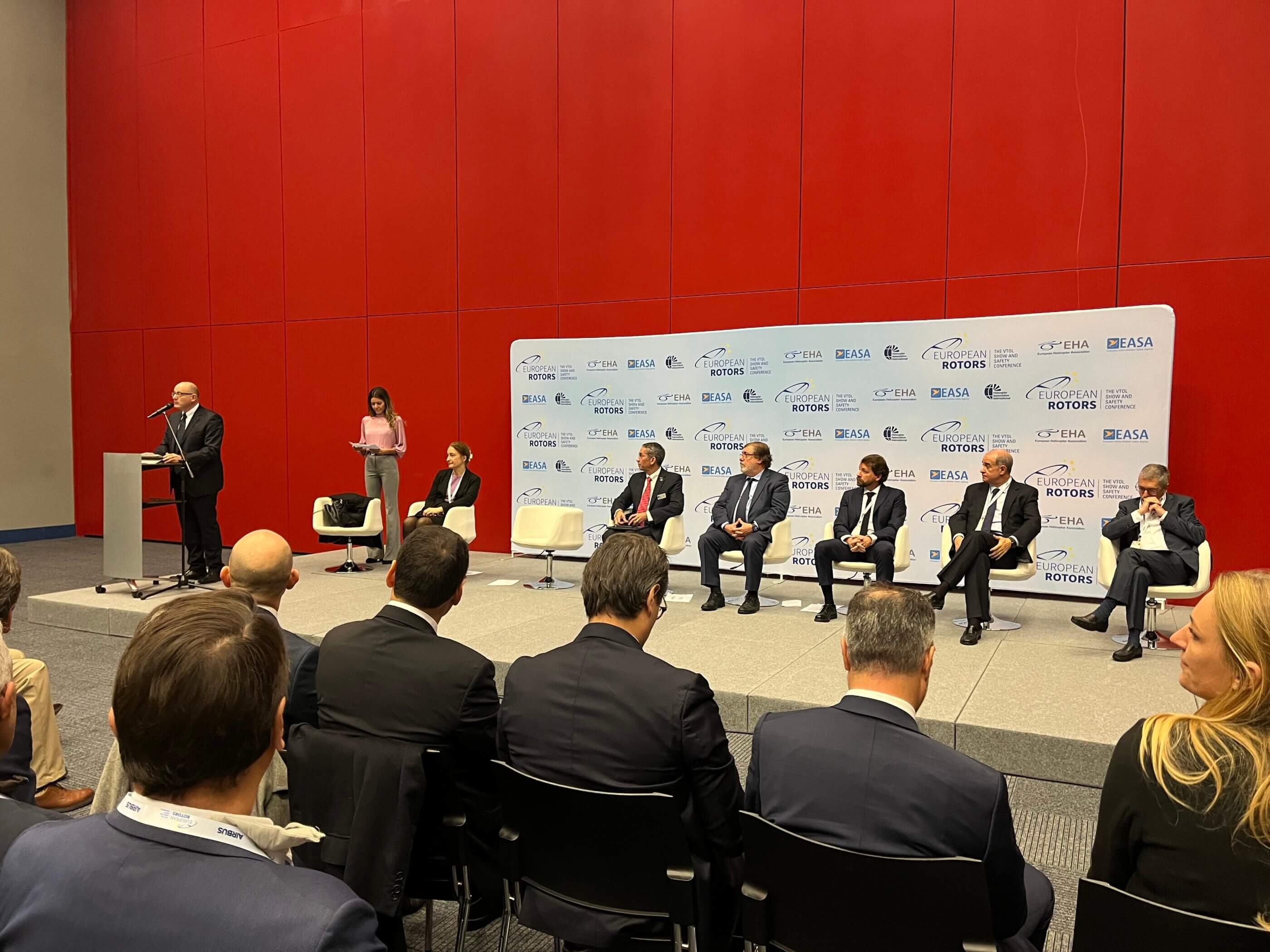The chairman of the European Helicopter Association (EHA) has called for the creation of a helicopter-specific regulatory framework by the European regulator, saying a “one size fits all” approach to rulemaking has “shown itself not to work for helicopters.”
Speaking during the European Union Aviation Safety Agency (EASA) Rotorcraft and VTOL Safety Symposium, held on the eve of European Rotors, Christian Muller said it was time to challenge some established industry paradigms. Among these, he said, were the ideas that more regulation equals more safety, and that one size fits all.
“We seek a regulatory framework that not only ensures the highest level of safety, but also one that is adaptive and responsive to the rapid changes in technology and market demands — regulation should enable, not inhibit,” said Muller. “They must also be designed to facilitate growth and innovation, with a focus on outcomes rather than prescriptive practices.”
He said the huge variety of work completed by helicopters — ranging from medical evacuation, to passenger transport, utility work, law enforcement and firefighting — required regulations that were equally as agile and varied.
“We need therefore, a separate regulatory framework that is sensitive to innovation, tailored to the specific needs of each operation. We need an EASA part R – Rotorcraft,” he said.
Defining the path forward, Muller called for a collaboration-based approach, with regulators and industry leaders coming together to craft rules that are enforceable and practical.
“Let’s start building bridges between what is necessary for safety, what fosters innovation, and what can be implemented in real life,” he said. “Furthermore, we need to give more say to the people who have to live by these rules: the pilots, technicians and consumers. Their first-hand experience is invaluable, providing insights that can lead to more nuanced and effective regulation.”
Earlier in the symposium, Rachel Daeschler, certification director at EASA, said “a lot” of industry stakeholders have spoken to her about the complexity of the existing regulatory framework, but said simplification was becoming a key objective for the regulator.
“We are working on a number of initiatives to make life easier . . . [and] also looking at how to make our new rules more user-friendly,” she said. “This is an area where more can be done in the future, and I’m calling for ideas on this topic.”
However, she noted that EASA is also working on building a new regulatory framework for the emerging VTOL industry, so working in tandem to simplify an existing setup “is not easy.”
Muller said simplicity is key.
“Complexity has become a barrier to safety, compliance, and an obstacle to clarity,” he said. “Regulations needs to speak directly to the engineers, the pilots and technicians and the operators. Rules that are clear cut, unambiguous and easily actionable, ensure that those on the frontlines of our industry are not bogged down by bureaucratic intricacies, but are empowered to perform their duty safely, with confidence and clarity.”
Greater fluidity within the industry itself would also help break down silos and catalyze innovation, he said, calling for stakeholders to make it easier for people to work in different parts of the industry.
“If you can switch from making helicopters, to flying them, to supervising a safe operation, we promote a comprehensive understanding of the industry,” he said. “[And] young talent will see opportunities.”
Muller also addressed the pressing issue of sustainability in aerospace, claiming that the belief that innovation alone will overcome the challenge “ignores the multifaceted nature” of the problem.
“True progress will come from a blend of technological, operational, and cultural shifts,” he said. “We must integrate renewable energy sources, develop new materials and adopt cleaner operational practices. Additionally, we must foster a culture that inquires about all things that could support this transition.”
Muller said the last two years have seen “a fundamental shift” in the relationship between the industry and the regulator, with interactions becoming more constructive.
“EASA’s forward thinking has pushed the industry — us — to consider the future proactively,” he said. “With our continued partnership based on the foundations laid out, we will not only review our paradigms, but we will forge new ones together.”





